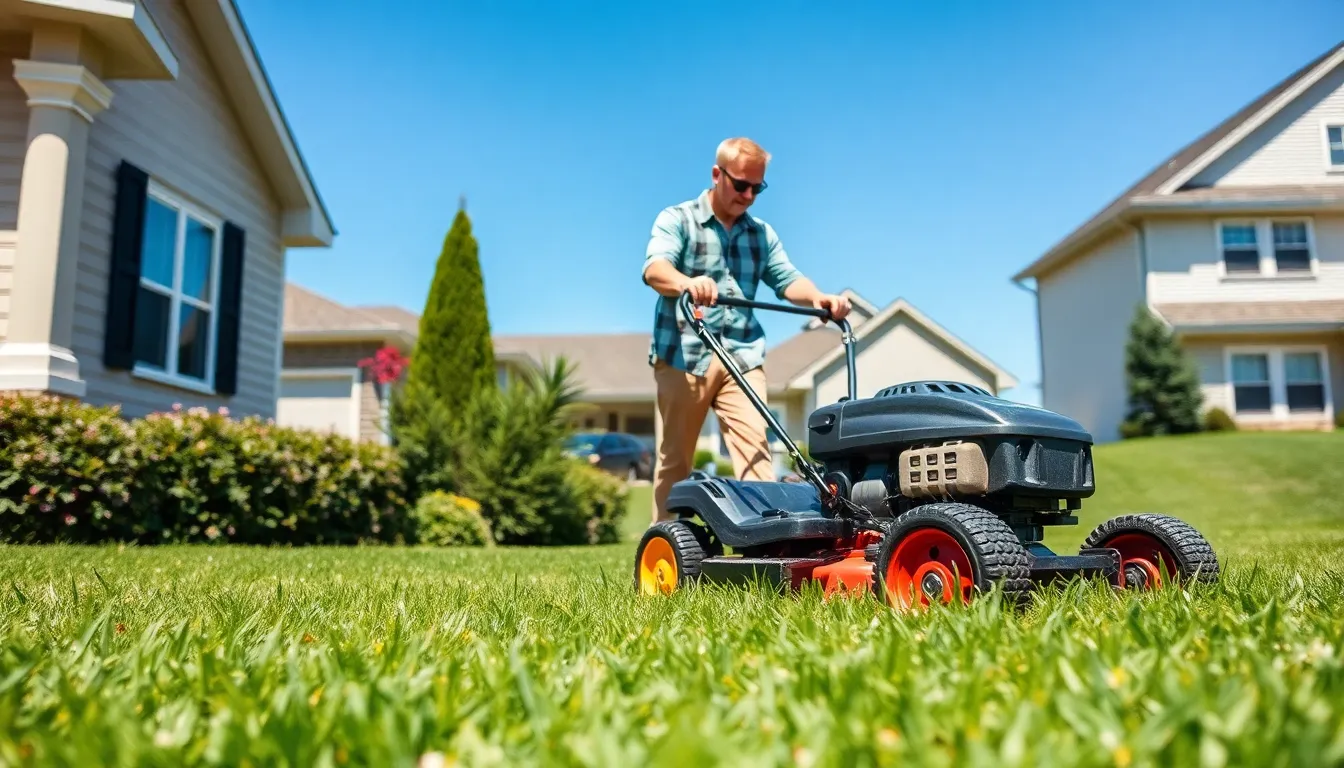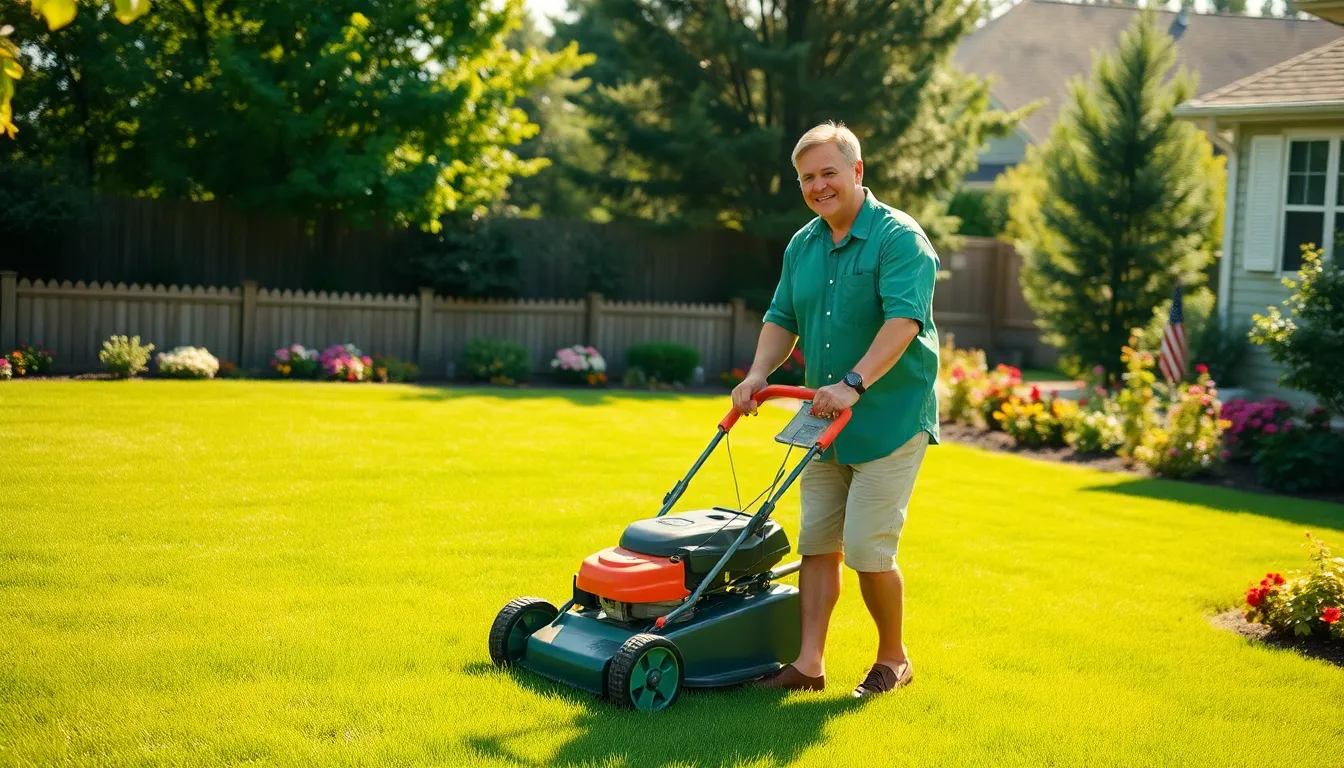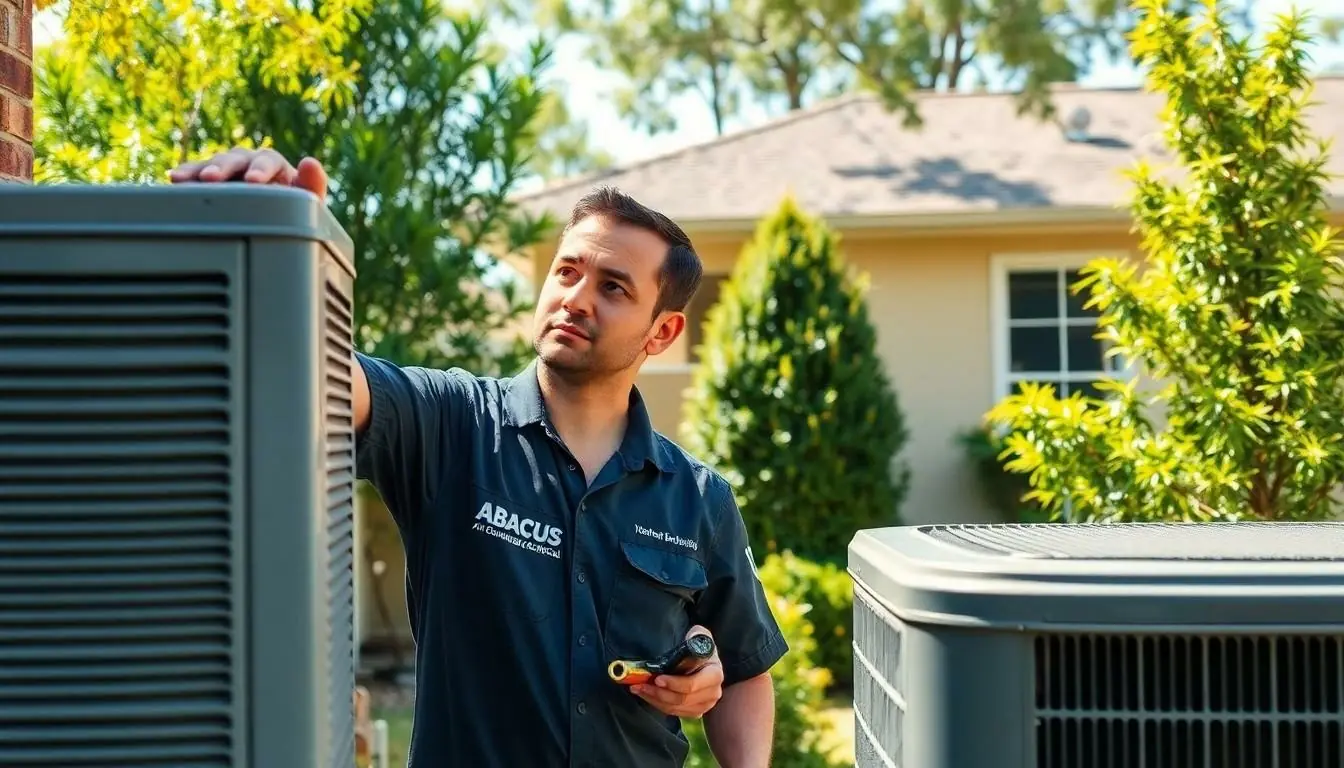Table of Contents
ToggleA lush green lawn isn’t just a patch of grass; it’s a canvas for outdoor living. It’s the pride of every homeowner, the envy of the neighborhood, and maybe even the perfect spot for a spontaneous barbecue. But keeping that carpet of green looking its best can feel like a full-time job, especially when the weeds and pests seem to have a vendetta against your turf.
Understanding Lawn Care
Maintaining a beautiful lawn requires knowledge and effort. Understanding key aspects of lawn care enhances both its health and aesthetic appeal.
Importance of Lawn Care
Lawn care contributes to environmental health, air quality, and property value. A well-kept lawn absorbs carbon dioxide, produces oxygen, and helps reduce soil erosion. Additionally, it offers aesthetic benefits that increase curb appeal and neighborhood standards. Regular maintenance practices, including mowing, watering, and fertilization, ensure a thriving lawn. These activities foster healthy growth while preventing pest infestations and weed encroachment. Homeowners invest in lawn care not just for beauty but also to create inviting outdoor spaces for relaxation and activities.
Common Lawn Care Myths
Several myths circulate about lawn care practices, often leading to improper maintenance. One common belief suggests that frequent mowing damages the grass. In reality, regular mowing encourages denser growth and healthier lawns. Another myth claims that all weeds must be removed for a perfect lawn. While controlling weeds is essential, some can coexist without harming the lawn’s overall health. Moreover, many assume that grass needs constant watering. Established grass types thrive on deep, infrequent watering, promoting root growth and drought resistance. Addressing these misconceptions leads to more effective lawn care strategies.
Essential Lawn Care Practices

Maintaining a healthy lawn involves several essential practices that enhance its appearance and vitality. Proper techniques in mowing and watering contribute significantly to lawn health.
Mowing Techniques
Mowing at the correct height promotes deep root growth. Longer grass blades shade the soil, reducing weed emergence. Adhering to a mowing schedule encourages even growth and prevents stress on the lawn. Sharp mower blades create clean cuts that minimize damage and disease. Mowing in different directions each time helps prevent soil compaction and encourages upright growth. Lastly, leaving grass clippings on the lawn provides nutrients, returning organic matter to the soil.
Watering Appropriately
Watering deeply and infrequently fosters strong root systems. Aim for about one inch of water per week, factoring in rainfall. Early morning is the ideal time for watering, minimizing evaporation and disease risk. Applying water at the roots promotes healthier grass while preventing diseases associated with wet foliage. Adjustments might be necessary during dry spells, ensuring lawns receive adequate hydration. Furthermore, using a rain gauge can help track watering needs accurately.
Fertilization and Soil Health
Fertilization plays a crucial role in maintaining lawn health. Healthy soil promotes robust grass growth, ensuring a vibrant outdoor space.
Types of Fertilizers
Organic fertilizers enhance soil structure and nutrient content while supporting long-term health. Examples include compost, bone meal, and fish emulsion. Synthetic fertilizers deliver nutrients quickly, often featuring a balanced ratio of nitrogen, phosphorus, and potassium (N-P-K). The choice depends on specific lawn needs and desired outcomes. Slow-release fertilizers provide sustained feeding, reducing the frequency of application and minimizing nutrient leaching. Choosing the right type supports desired lawn aesthetics and environmental sustainability.
Soil Testing and Amendments
Soil testing measures pH and nutrient levels, revealing vital information for effective lawn care. Conducting tests every 1 to 3 years helps identify deficiencies or imbalances, guiding amendment strategies. In cases of acidic soil, adding lime raises pH levels, promoting nutrient availability. Conversely, sulfur lowers pH in alkaline soils. Regularly applying organic amendments like compost enriches the soil ecosystem, fostering beneficial microbial activity. Targeted amendments elevate soil health, contributing significantly to overall lawn vitality.
Pest and Weed Management
Pest and weed management play critical roles in maintaining a thriving lawn. Identifying issues promptly ensures the lawn remains healthy and visually appealing.
Identifying Common Pests
Common lawn pests include grubs, chinch bugs, and armyworms. Grubs typically feed on grassroots, leading to brown patches in the lawn. Chinch bugs suck plant juices, causing dry spots, while armyworms can swiftly consume large areas of grass. Homeowners can detect these harmful pests by inspecting damaged areas for their presence. Regularly checking soil and grass for signs of infestations helps address problems before they escalate. Utilizing integrated pest management techniques keeps pest populations under control. This approach combines cultural practices and biological controls to minimize chemical usage.
Effective Weed Control Strategies
Weed control strategies eliminate unwanted plants and promote healthy grass growth. Pre-emergent herbicides effectively prevent weeds from germinating. Applying these herbicides before weeds sprout makes a significant impact. Manual removal also works well, allowing homeowners to uproot entire plants, roots included. Regular mowing prevents weeds from flowering and spreading seeds. Additionally, maintaining a dense lawn through proper fertilization and watering reduces weed competition. Using mulch in garden beds further restricts weed growth while enhancing aesthetics. Combining these methods creates a robust defense against invasive weeds.
Seasonal Lawn Care Tips
Seasonal lawn care requires specific actions to ensure a healthy, vibrant lawn throughout the year. Proper attention during each season maintains lush greenery and prevents common issues.
Spring Preparations
Spring brings new growth opportunities for lawns. Begin with a thorough inspection of the lawn for any damage from winter. Raking leaves and debris promotes healthy air circulation. Aerating the soil enhances root development and nutrient absorption. Applying a slow-release fertilizer, tailored to your grass type, supports robust growth. Consider overseeding to fill in bare spots and improve density. Incorporate a regular mowing schedule once the grass reaches the appropriate height. Utilize sharp mower blades for a clean cut, which reduces the risk of disease.
Fall Maintenance
Fall maintenance focuses on preparing the lawn for winter. Mowing should taper off as growth slows down; maintain a height of 2.5 to 3 inches to protect roots. Aeration remains beneficial, especially if the lawn experiences heavy foot traffic. Fertilizing in early fall provides essential nutrients, promoting strong root systems before winter dormancy. Reseeding any thin areas ensures a thicker lawn come spring. Clear fallen leaves promptly to prevent suffocation of grass beneath. Lastly, watering before the first freeze helps maintain moisture, supporting the lawn’s health through cold months.
A well-maintained lawn is a reflection of care and commitment. It not only enhances the beauty of outdoor spaces but also contributes to environmental health and property value. By understanding the essential practices of lawn care such as proper mowing techniques, effective watering strategies, and timely fertilization, homeowners can foster a vibrant landscape.
Staying informed about pest management and seasonal maintenance ensures lawns remain resilient against threats. With dedication and knowledge, achieving that lush green lawn is entirely within reach. Investing time and effort into lawn care ultimately creates inviting spaces for relaxation and enjoyment, making it a rewarding endeavor for any homeowner.







